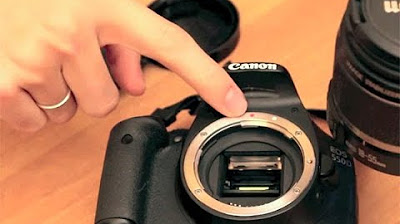What is Photography?
Summary
TLDRThis introductory photography course from Oliver City covers the basics of photography, defining it as 'drawing with light.' It explores different photography styles like art, documentary, and commercial, each with its unique approach. The course distinguishes between art photography, focused on the artist's expression, documentary photography, aiming for neutral storytelling, and commercial photography, driven by client needs and advertising. Examples from renowned photographers like Ansel Adams and Dorothea Lange illustrate the styles, emphasizing the blend of artistry and documentation in capturing light.
Takeaways
- 📸 **Definition of Photography**: Photography is described as 'drawing with light', derived from the Greek word 'photo' meaning light and 'graphy' meaning drawing.
- 🔍 **Functional Definition**: Photography involves recording images on sensitized material through light or other rays and processing this material to produce prints, slides, or films.
- 🎨 **Art Photography**: This style is created with the artist in mind, using photography as a medium for self-expression and pushing the boundaries of visual art.
- 📰 **Documentary Photography**: Focuses on documenting subjects as neutrally as possible, aiming to tell a story about the person or situation without influencing it.
- 💼 **Commercial Photography**: Often commissioned with a specific customer in mind, it includes advertising components and is used for promotional purposes.
- 📈 **Evolution of Photography**: The industry has evolved from film cameras to digital photography, with video also being a form of moving photography.
- 🖼️ **Examples of Photographers**: Ansel Adams is highlighted as a landscape art photographer, while Dorothea Lang's 'Migrant Mother' represents documentary photography.
- 🤳 **Commercial Examples**: Wedding and fashion photography are common commercial styles, often paid for by clients for specific events or products.
- 👨🎨 **Diversity in Photography**: Photographers can range from professionals with large lenses to those using medium format cameras, and even amateurs, showcasing a wide array of styles and approaches.
- 📚 **Continuing Education**: The course will progress to the history of photography, indicating a deeper dive into the subject's development and influences.
Q & A
What is the literal meaning of the word 'photography'?
-The word 'photography' comes from two Greek words: 'photo' meaning light and 'graphy' meaning drawing. Therefore, photography literally means 'drawing with light'.
How does the script define photography in a more functional sense?
-Photography is defined as the process of recording images on sensitized material by the action of light or X-rays and then chemically processing the material to produce a print, slide, or film. It is also described as the art or practice of taking photographs or making films.
What are the three main styles of photography mentioned in the script?
-The three main styles of photography discussed are art photography, documentary photography, and commercial photography.
How is art photography different from other forms of photography?
-Art photography is created with the artist in mind, focusing on self-expression and pushing the boundaries of the visual world. It is primarily about the photographer’s vision.
What is the main focus of documentary photography?
-Documentary photography is focused on the subject, documenting a situation in as neutral a way as possible without influencing the scene. It is about telling a story through images.
What characterizes commercial photography?
-Commercial photography is done with a specific customer in mind, often involving advertising or promotion. It can include work such as wedding photography or fashion photography, where the photographer is paid for capturing specific images.
What is the 'X group' in photography as mentioned in the script?
-The 'X group' refers to people who use photography in their work, but not in a traditional artistic, documentary, or commercial way. Examples include police officers or salespeople who use photography for documentation or records.
What are the differences between film photography and digital photography?
-Film photography uses physical film to capture images, whereas digital photography uses sensors and digital storage. Digital photography is more modern and widely used today, while film photography was the primary method before the digital age.
What is an example of a famous art photographer mentioned in the script?
-Ansel Adams is mentioned as a famous art photographer known for his landscape photography.
What ethical consideration is highlighted in the difference between art and documentary photography?
-In documentary photography, the photographer is expected not to influence the scene, capturing it as it naturally unfolds. In contrast, art photography may involve directing or posing subjects, which could alter the authenticity of the moment.
Outlines

This section is available to paid users only. Please upgrade to access this part.
Upgrade NowMindmap

This section is available to paid users only. Please upgrade to access this part.
Upgrade NowKeywords

This section is available to paid users only. Please upgrade to access this part.
Upgrade NowHighlights

This section is available to paid users only. Please upgrade to access this part.
Upgrade NowTranscripts

This section is available to paid users only. Please upgrade to access this part.
Upgrade NowBrowse More Related Video

BELAJAR FOTOGRAFI BASIC PHOTOGRAPHY SMARTPHONE

If I Had To Learn Photography Again, This Is How I Would Do It.

10 Common Photography Mistakes Beginners Make // Photo Pro

Corso di Fotografia di base - 1 - Accendiamo la reflex

Lightroom Mobile Tutorial for Beginners | FREE COURSE

Street Photography at Night (Exposure, filters, colours and safety)
5.0 / 5 (0 votes)